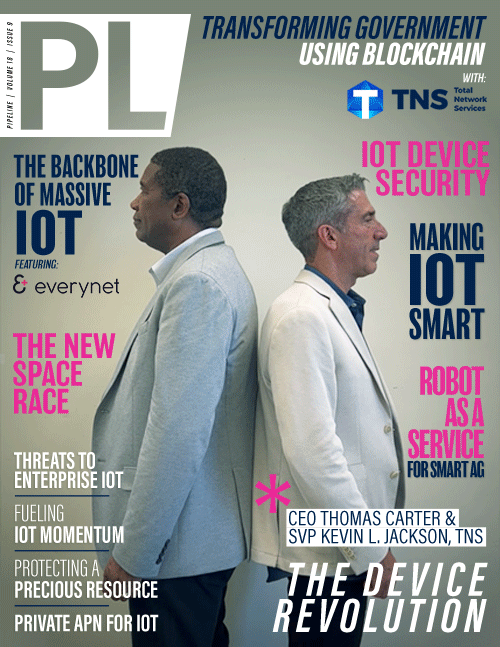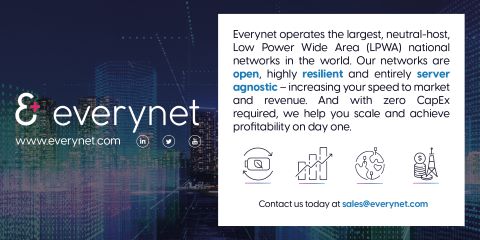LoRaWAN: The Backbone of Massive IoT
By: Lawrence Latham - CEO, Everynet BV

Digital transformation is growing exponentially, on track to reach $2.8 trillion by 2025. Nowhere is this more evident than in the United States, where public and private sector enterprises are looking for reliable, economical, and sustainable methods of enabling digital transformation across a range of applications—from smart cities and utilities to asset tracking and beyond.
What is the best technology to enable the collection and transmission of massive amounts of small data required in our increasingly connected world? LoRaWAN.
Evolving the connected world
Wireless communications are moving toward higher bandwidths to support the necessary data transmission volumes needed for next-generation AI systems. But most sensors don’t require enormous throughput. In fact, billions of everyday devices, such as water and energy meters, pallet and roll cage trackers, predictive maintenance sensors, and many others, only need to report a very small amount of data. High throughput connectivity is also costly due to network build and maintenance expenses. The result is a gap between market needs and available connectivity technologies—a gap growing wider with the sunset of 2G and 3G networks.
LoRaWAN, the globally adopted, open-standard technology for enabling long range wide area wireless IoT connectivity, closes the gap by offering significantly lower device and connectivity costs. It also offers optimal data usage, sustainable battery life and indoor-outdoor coverage.
Scalable and ultra-low cost, the technology empowers public and private sector enterprises to rapidly implement IoT services, without having to bear high investments and infrastructure complexity. In addition, IoT services promote sustainability. Specifically, the sensors and devices used to transmit data in LoRaWAN networks require very little power to operate. For example, a sensor using a standard AAA battery might last several years given the incredibly low energy needs required of these sensors; and there's no use of SIM cards—both factors that reduce costs and eliminate excessive waste.
LoRaWAN in action: evolving our world
As LPWAN technology, and specifically LoRaWAN, is more readily available in the United States and abroad, its adoption rate is increasing, as are the benefits to public and private sector enterprises.
Utilities get smart with LoRaWAN
Water is our world’s most precious resource. Accordingly, studies show that the global market size for smart water management will reach $23.5 billion by 2027. This growth





















